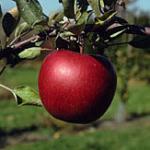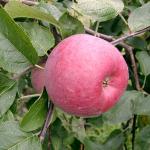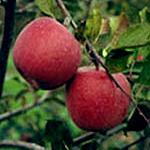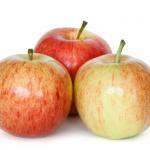Akane is a cross between the well-known Jonathon and the obscure Worcester Pearmin. Akane comes highly recommended as a dessert apple, with an invigorating, tart taste and a marked aroma. Beneath its thin skin, the bright white flesh is juicy and crisp.
If you leave the peels on, Akane will make a pinkish sauce with a very good flavor; strain the sauce after cooking. pie slices keep their shape. The apples can be dried successfully. Akane will not keep its quality for long in storage.
Apple descriptions taken from Apples by Roger Yepsen (c.1994 , W.W. Norton & Company)








